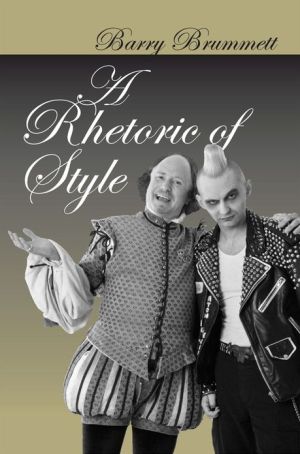A Rhetoric of Style
Exploring style in a global culture\ In A Rhetoric of Style, Barry Brummett illustrates how style is increasingly a global system of communication as people around the world understand what it means to dress a certain way, to dance a certain way, to decorate a certain way, to speak a certain way. He locates style at the heart of popular culture and asserts that it is the basis for social life and politics in the twenty-first century.\ Brummett sees style as a system of signification grounded...
Search in google:
In A Rhetoric of Style, Barry Brummett illustrates style's new role as a global system of communication, as people around the world understand and agree on what it means to dress a certain way, to dance a certain way, to decorate a certain way, to speak a certain way. Brummett sees style as a system of signification grounded largely in image, aesthetics, and extrarational modes of thinking. A Rhetoric of Style locates style at the heart of popular culture and asserts that it is the basis for social life and politics in the twenty-first century.
1 Style at the Center of Popular Culture 12 The Social and Commercial Structuring of Style 423 The Political Consequences of Style 744 A Rhetoric of Style for the Twenty-first Century 1165 Gun-Culture Style and Its Rhetoric in the United States 149Postface, with an Imaginary Etymology 171References 177Index 185
\ Issues in Writing - D Alexis Hart\ By way of illustrating how his system might be applied, Brummett offers a critique of the gun culture in the United States. After identifying himself as a lifetime member of the National Rifle Association (NRA), Brummett evaluates his personal experiences attending gun shows, participating in the Usenet group rec.guns, shopping at firearms stores, and shooting guns at ranges, and performs a close reading of six issues of American Rifleman. According to Brunimett's analysis, gun culture performs as a rural, White, male, working-class style and thus coheres around two key contradictions: 1) "a passion for individuality and self-determination on the one hand, and deference to authority, rules, and laws on the other hand" and 2) a tension between rural work contexts and urban threats (155). Given these constraints, Brumrnett suggests that gun-culture style "be seen as part of a wider effort to preserve an exploitative class structure" (170) that encourages submission to authority. This example provides a useful model for how one might use Brummett's system to analyze the political and social consequences of style.\ Brurnmett concludes his book with an unapologetic critique of academics who lament the cultural shift away from "the verbal, expositional, and demonstrative toward a more aesthetic mix" (172). Whether we are happy about this shift or not, says Brummett, style is increasingly becoming the way people communicate, so we need to understand how it works. Brurnmett's book provides us with a solid literature review to increase our understanding and provides us with a useful methodology for carrying out our critiques. Brummett presents a compelling case that a rhetoric of style is particularly suitable for analyzing twenty-first century texts (such as the 2008 Olympic ceremonies). However, I agree with Brummett that this rhetoric should supplement, not supplant existing schemas and methodologies of rhetorical analysis. Therefore, I would recommend the entire book for graduate-level classes studying other rhetorical theories and/or methods of rhetorical analysis. Although much of the material in the early chapters requires some fairly substantial grounding in postmodern theories (e.g., Baudrillard, Lacan, Jameson), chapters 4 and 5 could also be used successfully in undergraduate courses. --D. Alexis Hart, Virginia Military Institute\ \ \








